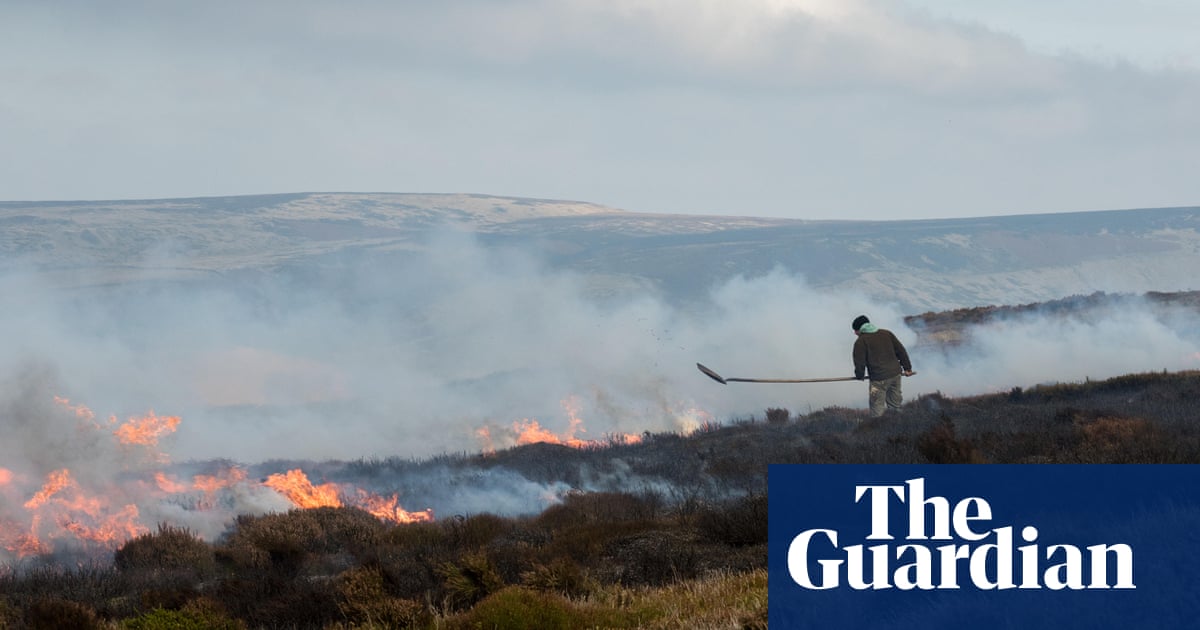Researchers havecreated a systemto detect and measure the impacts of moorland fires, which will form part of a response togovernment proposalson heather and grassland burning in England.
Dr Maria Val Martin from theUniversity of Sheffield, one of the three universities involved, explained: “I studied wildfire smoke impacts in the western US, and experienced smoke and air quality alerts first-hand while living and working in Colorado, but I never expected to encounter similar conditions here in the UK.
“That changed on 9 October 2023, when smoke from prescribed burns in the Peak District covered the entire city of Sheffield. Everyone in the team is based in Sheffield, and we all experienced the event.”
Smoke lingered in the city for approximately six hours. Its source was official burns to manage the moorland for various purposes, including game bird shooting. Particle pollution in Sheffield reached itshighest values for eight months, but there was no data from villages closer to fires. The research team set up a pilot system for the 2024 burn season called FireUp, combining satellite data and 10 ground-based sensors in part of thePeak District national park.
Val Martin said: “Satellite imagery can help us detect where and when burns are happening, but in the UK they often miss events because of cloud cover or short burn times. We therefore need ground data too.”
Dr Rebecca Brownlow fromSheffield Hallam Universityexplained: “Our sensors require mains power, so we asked local residents to host them. The response was very positive. Many people living and working in the Peak District wanted to take part. They also shared their personal experiences of smoke events and their concerns about air quality and their own health.”
Dr Joe Glentworthadded: “On 11 November 2024, one of our sensors recorded a big increase in particle pollution. It was in a small residential area. Local residents also began sending us photos via WhatsApp. This combination of community reporting and high-resolution monitoring allowed us to capture a short-lived but significant pollution event that may have otherwise gone unnoticed.”
Triangulating data from the ground-based sensors and instruments on thePlanetScopeandSentinel-2satellites enabled the team to pinpoint the fire locations.
A next step will be an app to make it easier for residents, visitors and organisations to log both wildfires and prescribed burns.
“England’s peatland burning is releasing harmful levels of air pollution that current monitoring fails to capture, and existing regulations struggle to control,” Val Martin said. “Policymakers now have both the means and the mandate to address this long-overlooked issue, ensuring that upland land management better reflects contemporary climate, health and environmental priorities.”
Sign up toDown to Earth
The planet's most important stories. Get all the week's environment news - the good, the bad and the essential
after newsletter promotion
The approach used in FireUp could also be used to assess the impacts of landscape fires across other parts of the UK.
After an exceptionally dry spring, there have been more than 30 moorland fires in the Peak District and south Pennines, prompting anew system of fire risk warnings for visitors.
In2018 fireson Winter Hill and Saddleworth Moor burned for seven weeks, causing air pollution problems acrossManchester and more than 60km (40 miles) away in St Helens, Merseyside, with more than4.5 million peopleexposed to air pollution that exceeded the World Health Organization’s daily guidelines. The resulting health burden was estimatedat between 14 and 42 early deaths.
